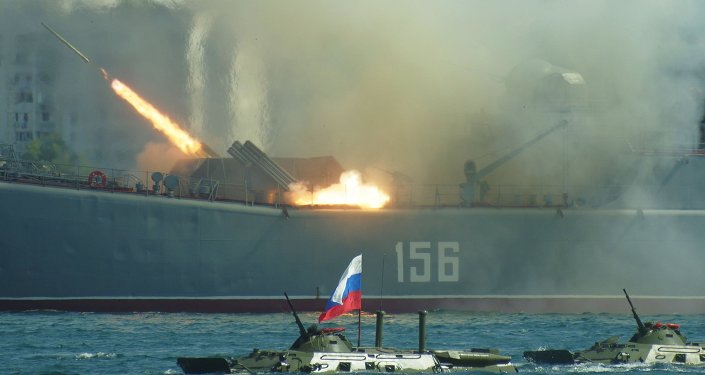
Russia: To protect the balance of power in Asia, Russia and China launched eight days of joint naval exercises, called “Naval Interaction 2016,” in the South China Sea on Monday, experts told Russian business newspaper Vzglyad. The exercise will involve two submarines, 13 surface ships, 20 aircraft and helicopters, more than 250 marines as well as 12 armored personnel carriers and amphibious armored vehicles from the Chinese People’s Liberation Army Navy (PLAN) and the Russian Navy’s Pacific Fleet.
Dmitriy Mosyakov, head of the Center for South-East Asia, Australia and Oceania at the Russian Institute of Oriental Studies, told Vzglyad that neighboring countries like Taiwan, The Philippines and Vietnam are unlikely to perceive the drills as a threat, given the US attempts to increase its naval presence in the region.
“They understand very well in all these countries that the real reason for Russian-Chinese drills is the growing activity of the US navy in this region. For example, the number of US submarines there has increased a lot recently,” Mosyakov said, adding that the drills were planned long in advance and none of the neighboring nations have sought to link them to territorial disputes with China in the South China Sea.
Former Commander of Russia‘s Pacific Fleet Igor Khmelnov said that while the Philippines, which recently won its case against China regarding the South China Sea in The Hague tribunal, has been considered a staunch ally of Washington, recent announcements from Manila appear to reflect the changing balance of power in Asia.
“The Chinese sailors are very well-prepared. From the point of view of joint exercises and countering the potential enemy, these are serious exercises and a serious effort,” Khmelnov said. In July the Hague-based Permanent Court of Arbitration ruled in favor of the Philippines in its territorial dispute with China over the South China Sea.
Manila brought the case to the court in 2013, with backing from the US. However, China has refused to recognize the court’s jurisdiction over the dispute, and has instead called for bilateral negotiations among the parties to the dispute. On Monday Philippines President Rodrigo Duterte demanded that US special forces leave the south of the country, where they have been fighting Islamic insurgents.
“The statement reflects [Mr Duterte’s] new direction towards coursing an independent foreign policy,” explained the President’s spokesman Ernesto Abella. As well as China and the Philippines, Vietnam, Indonesia, Taiwan, and Brunei also make overlapping claims to the South China Sea, a highly contested region which includes the disputed Spratly and Paracel Islands, and through which nearly $5 trillion in international trade passes annually.




